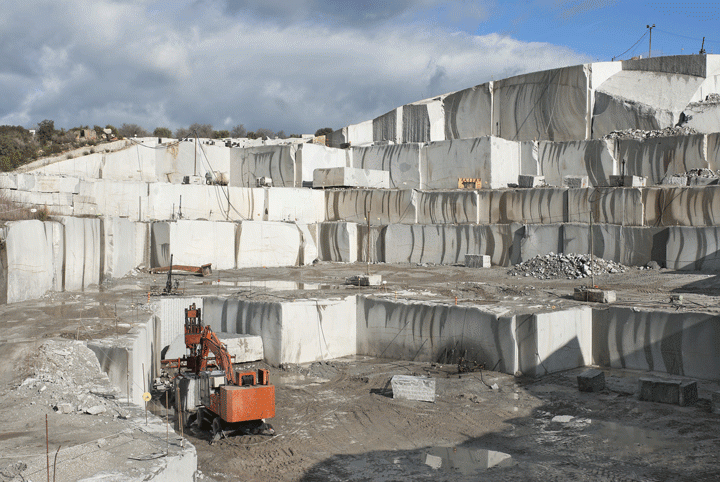Opening Natural Prizes: Granite Quarries in South Africa Revealed
Introducing the Mysteries of Granite Quarrying: Where Strength and Style Meet
The globe of granite quarrying is a realm where the raw toughness of nature converges with human virtuosity to produce frameworks that stand the test of time with an air of sophistication. From the depths of quarries to the meticulous sprucing up in workshops, the process of changing granite into building wonders is a complex dance of tradition and innovation. As we peer into the midsts of this old craft, we begin to uncover the surprise details that shape the extremely essence of our constructed atmosphere.
The Origins of Granite Quarrying
In the record of architectural history, the origins of granite quarrying are shrouded in a tapestry of ancient craftsmanship and geological marvels. Dating back to ancient Egypt and Mesopotamia, the removal of granite from quarries noted the beginning of a trip that would eventually bring about the creation of several of the world's most iconic frameworks.
Granite quarrying's origins can be traced to the knowledgeable artisans that recognized the stone's longevity and visual allure. Through a combination of primitive tools and sheer resolution, these early quarry employees unearthed granite blocks that would end up being the building blocks of worlds.
As human beings progressed, so did the techniques of quarrying granite. The Romans, renowned for their design expertise, created advanced approaches for removing granite to create monuments, temples, and roads that stood the examination of time.
The tradition of these old quarrying methods remains to shape modern architecture, with granite remaining a symbol of stamina and beauty in building and construction jobs around the globe. (granite quarries in south africa)
Devices of the Quarrying Trade
The evolution of granite quarrying strategies from ancient worlds to modern times highlights the vital function played by the devices of the quarrying trade in shaping the market's techniques. In old times, quarrying devices were simple, typically consisting of knives, hammers, and wedges made from materials like bronze or iron. These tools needed significant workforce and time to remove granite blocks from quarries.

Additionally, the introduction of pneumatically-driven devices and high-powered machinery has dramatically minimized the physical labor required in quarrying operations, improving employee security and productivity. As the quarrying market continues to innovate, the devices of the profession continue to be at the leading edge of driving progress and shaping the future of granite removal.
Removing Blocks of Granite
Utilizing precision machinery and advanced methods, the extraction of granite blocks from quarries has actually ended up being a sophisticated procedure in the modern-day quarrying industry. The initial step includes identifying the location and size of the granite down payment to identify the most efficient removal approach. When a suitable site is chosen, the extraction procedure starts with the drilling of holes for the positioning of nitroglycerins. Managed blowing up methods are then used to disintegrate the granite into convenient areas.

Sprucing Up and Finishing Techniques
To accomplish a remarkable surface area on granite blocks, experienced artisans utilize a series of precise polishing and finishing techniques. After the initial extraction and shaping procedures, the granite obstructs undergo a complete polishing phase to enhance their natural appeal and toughness. One usual approach made use of in polishing granite is ruby abrasion, where commercial diamonds are used to grind and polish the rock to a smooth surface. This procedure not just creates a shiny surface but also makes certain harmony in color and structure across the granite block.
Along with sprucing up, ending up techniques are related to more improve the granite's appearance. These methods may consist of flaming, developing, or cleaning, each offering unique appearances and surfaces to fit different visual preferences. Flaming, for instance, involves revealing the granite surface to high temperatures to produce a harsh, distinctive finish, suitable for outside applications where slip-resistance is vital. Refining, on the various other hand, offers a matte coating that is smooth to the touch, ideal for interior kitchen counters and floor covering. By very carefully choosing and applying these polishing and finishing methods, artisans can change raw granite blocks right into charming items that display both strength and beauty.

Ecological Effect and Sustainability
With the expanding emphasis on environmental consciousness in the sector, granite quarrying practices are increasingly inspected for their influence on natural sources and long-term sustainability. Additionally, the transport of granite from quarries to processing centers produces carbon exhausts, better contributing to environmental degradation.
To alleviate these impacts and guarantee sustainability in granite quarrying, sector stakeholders are embracing various procedures. Applying innovative technologies to minimize energy usage and water use, reclaiming quarried land for environmental restoration, and promoting accountable sourcing practices are some methods being used. Qualifications such visit the website as the Woodland Stewardship Council (FSC) and the Management in Energy and Environmental Style (LEED) aid consumers determine environmentally friendly visit this page granite items.
Final Thought
To conclude, granite quarrying is a procedure that needs specialized devices and methods to extract blocks of granite and polish them to a high degree of coating. While the environmental influence of quarrying can be significant, initiatives are being made to improve sustainability practices in the market. On the whole, granite quarrying is a fragile balance in between using the strength and sophistication of this natural rock while minimizing its effect on the environment.